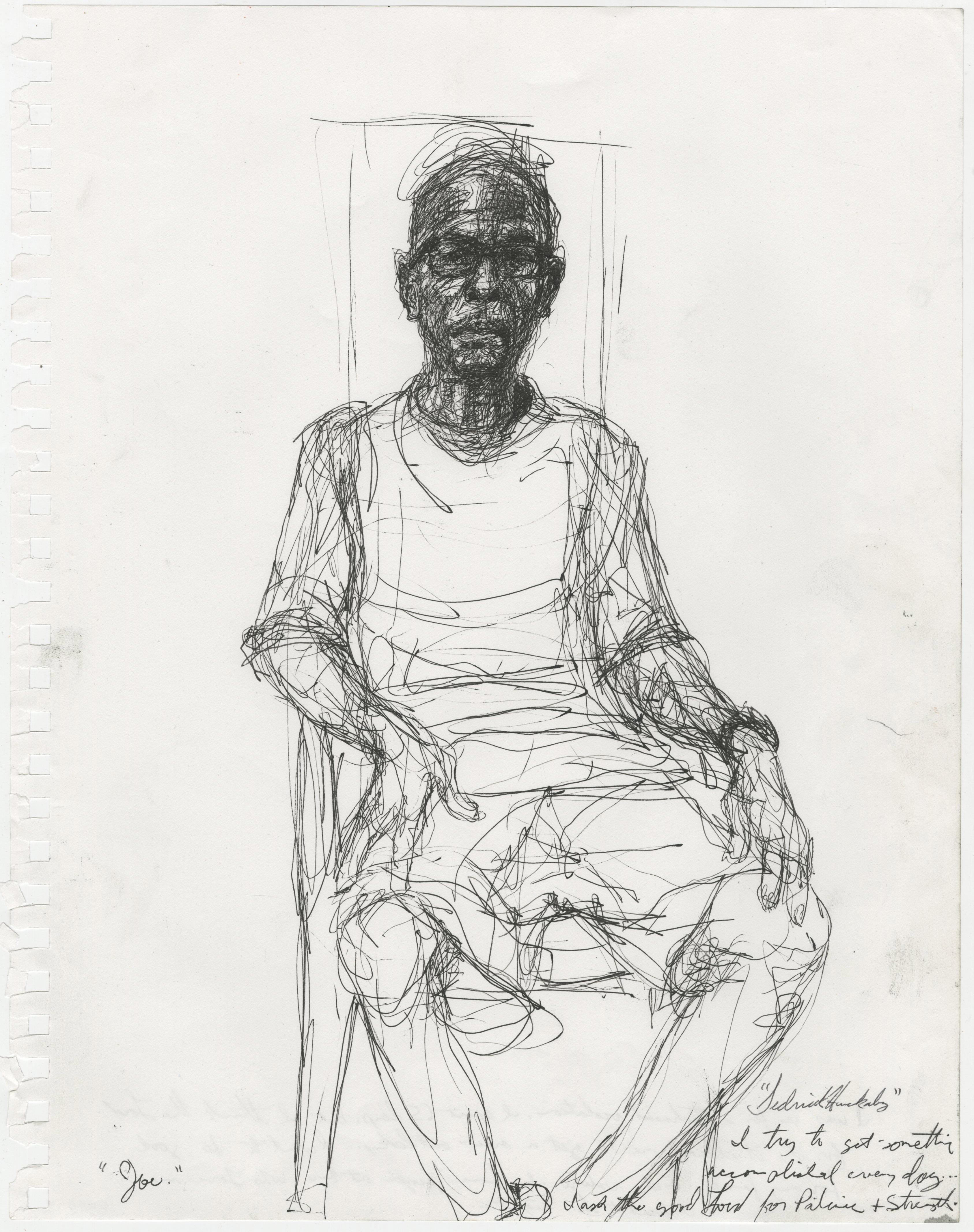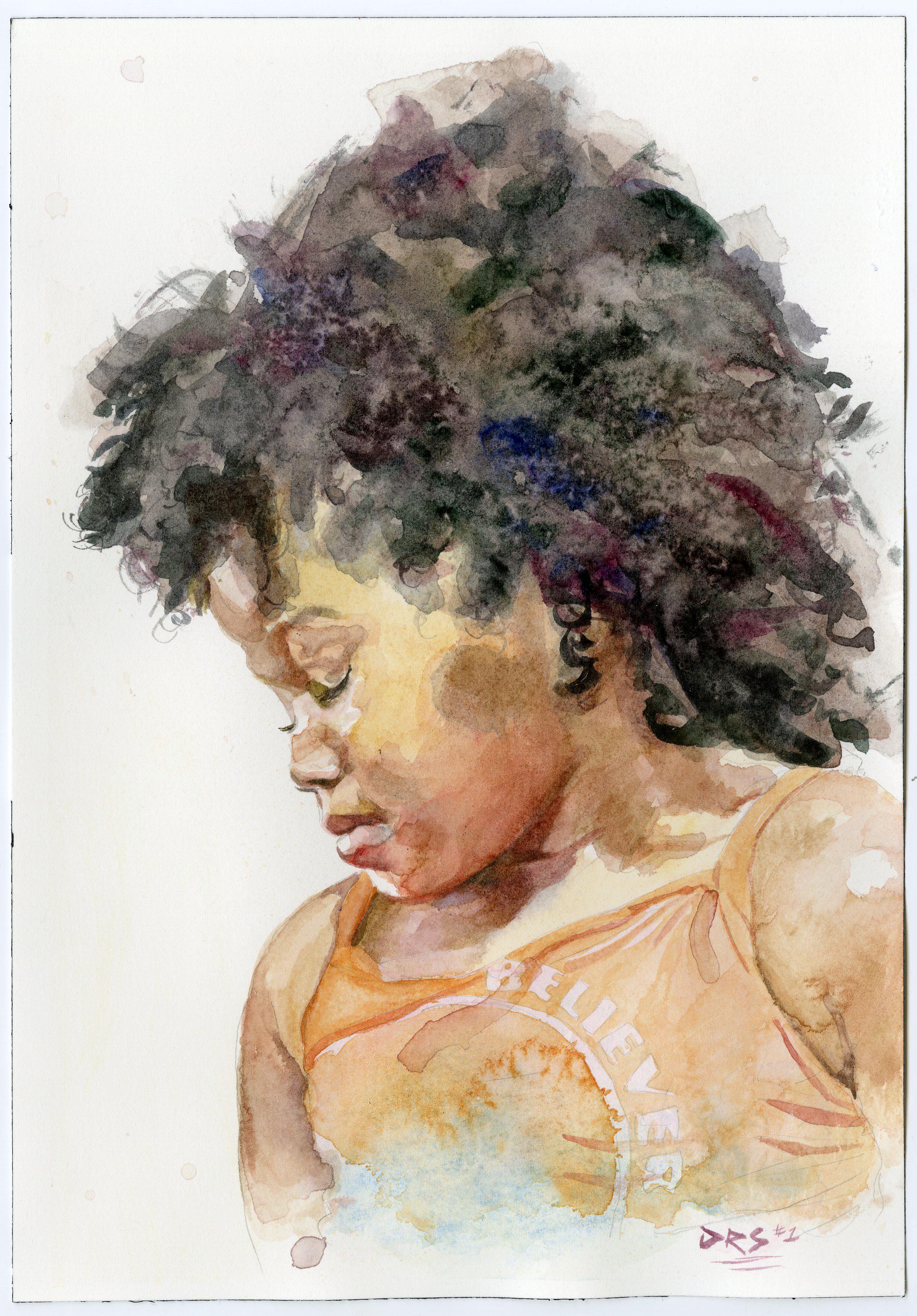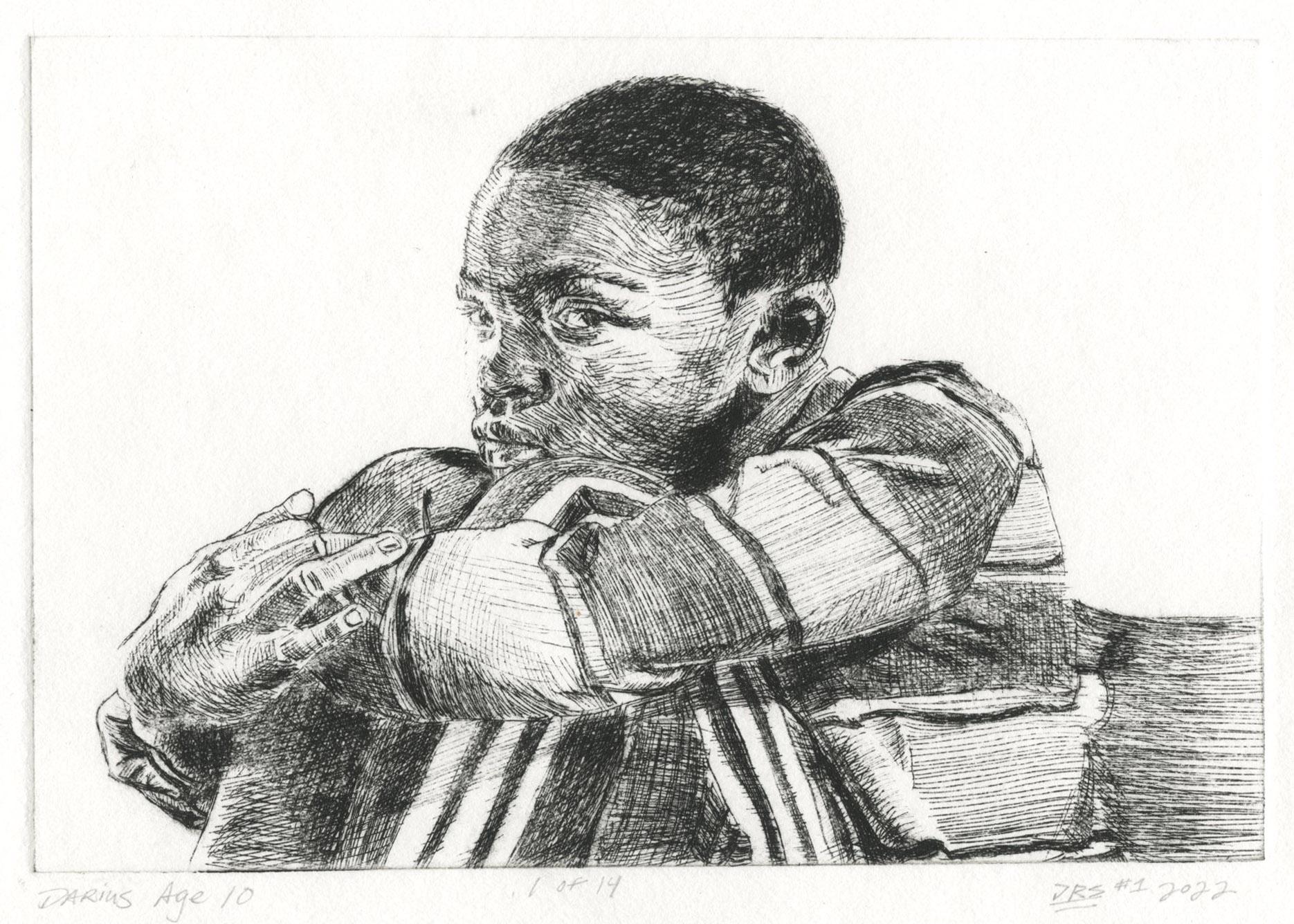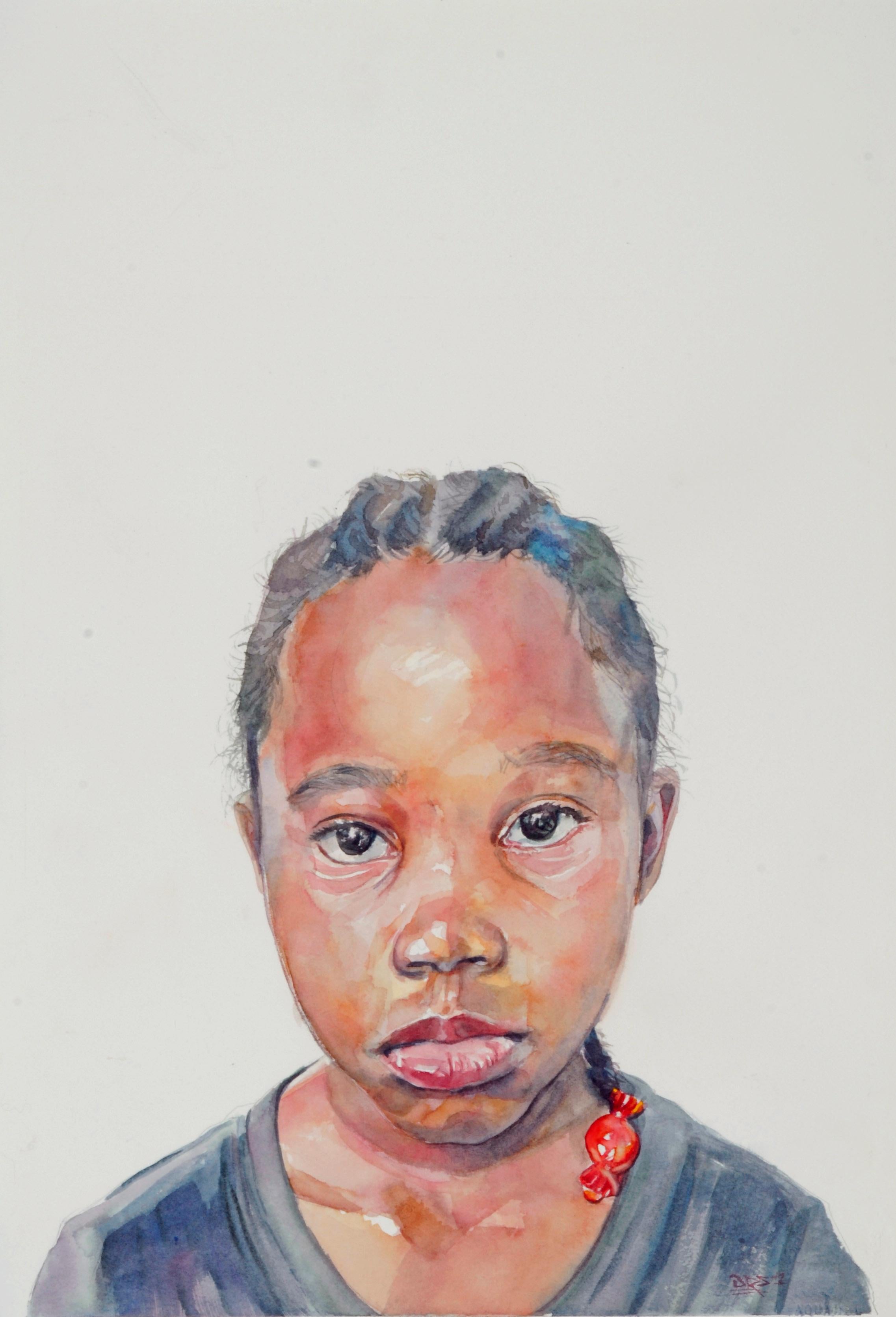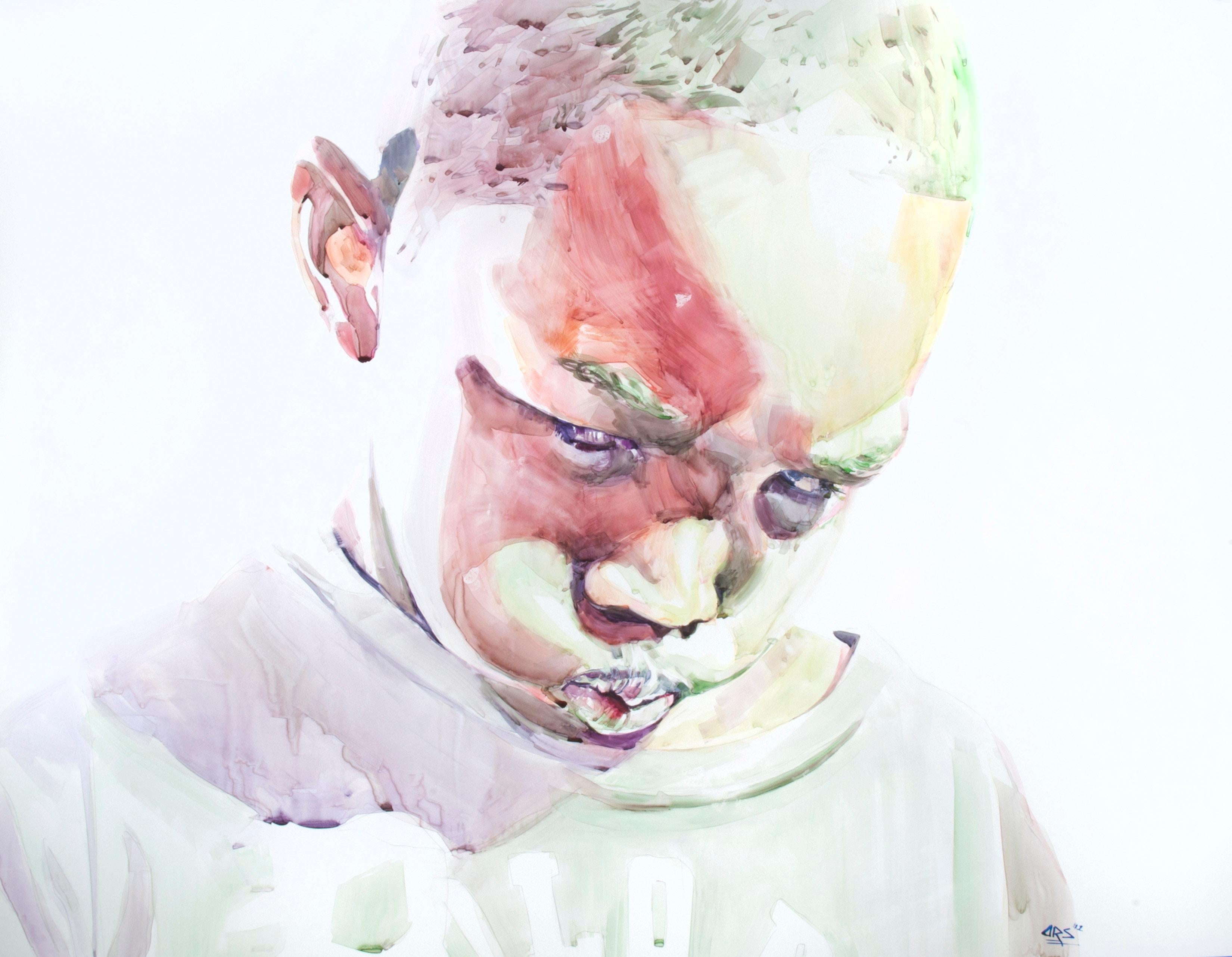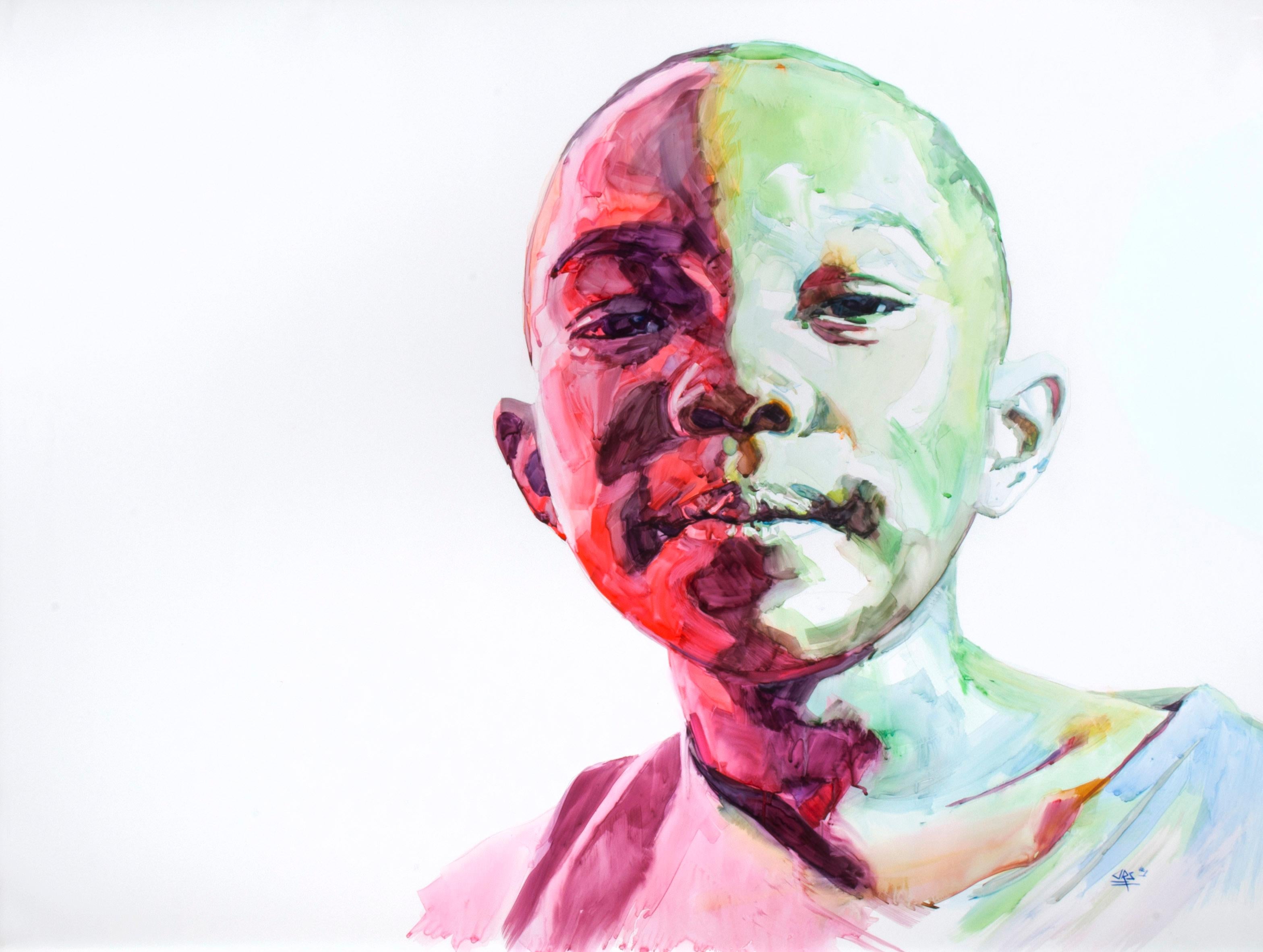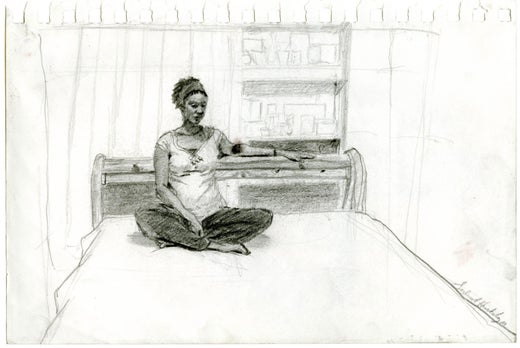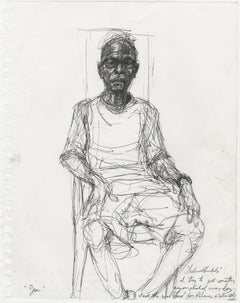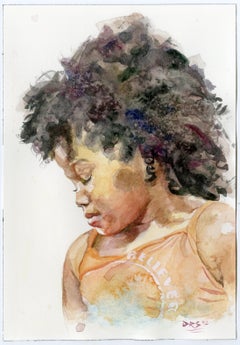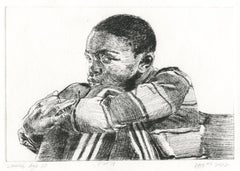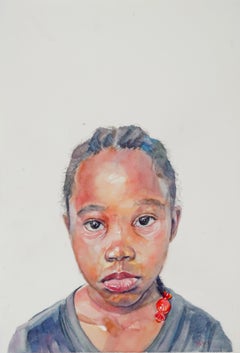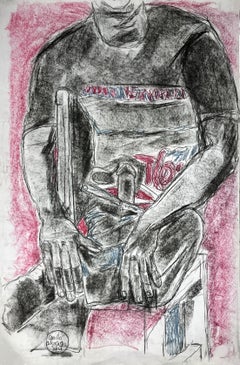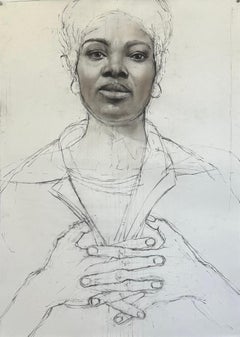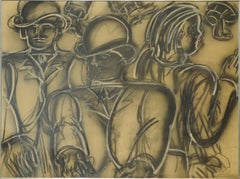Sedrick HuckabyJazmen2013
2013
About the Item
- Creator:Sedrick Huckaby (1975, American)
- Creation Year:2013
- Dimensions:Height: 14 in (35.56 cm)Width: 10.44 in (26.52 cm)
- Medium:
- Movement & Style:
- Period:
- Condition:
- Gallery Location:Fairlawn, OH
- Reference Number:Seller: FA99791stDibs: LU14015095502
Sedrick Huckaby
Sedrick Huckaby's large-scale paintings draw inspiration from his family history and his African-American roots. Born in Fort Worth, Texas, Huckaby received his BFA from Boston University in 1997 and his MFA from Yale University in 1999.
Huckaby has taught as a professor at Tarrant County College in Fort Worth and currently is a professor of water media at the University of Texas in Arlington. He has been honored as a Fellow at the Fine Arts Work Center in Provincetown, at the Skowhegan School of Painting and Sculpture, as a Kate Neal Kinley Memorial Fellow at the University of Illinois, and as a Brandeis Mortimer Hays Traveling Fellow, which gave him the opportunity to study the works of European masters abroad.
Huckaby’s own work has been included in exhibitions at the Studio Museum in Harlem and the Park Avenue Armory in Manhattan, at the African American Museum in Dallas, at the San Angelo Museum of Fine Arts in Texas, and at the Hammonds House Museum in Atlanta. His work A Love Supreme, comprising pieces forming an 80-foot long painting of quilts created by his grandmother, celebrates both jazz and quiltmaking as central elements of African-American culture. It serves as a foundation for his Guggenheim Fellowship project: to explore and paint the tradition of quiltmaking around the United States, and to add some of those paintings to A Love Supreme to more fully realize his intention in that installation.
Huckaby's work is included in the collections of the Museum of Fine Arts in Boston, the Whitney Museum of American Art in New York City, the African American Museum in Dallas, and the Kansas African American Museum in Wichita. He is the recipient of the Louis Comfort Tiffany Award and the Imagination Celebration Spirit of the Future Award, among others.
Find original Sedrick Huckaby paintings, prints and other art on 1stDibs.
(Biography provided by Thomas French Fine Art)
- ShippingRetrieving quote...Shipping from: Fairlawn, OH
- Return Policy
More From This Seller
View All2010s Contemporary Figurative Drawings and Watercolors
Ink
2010s Contemporary Figurative Drawings and Watercolors
Watercolor
2010s American Realist Figurative Prints
Drypoint
2010s Contemporary Portrait Drawings and Watercolors
Watercolor
2010s Contemporary Figurative Drawings and Watercolors
Watercolor
2010s Contemporary Figurative Drawings and Watercolors
Watercolor
You May Also Like
21st Century and Contemporary Contemporary Figurative Drawings and Water...
Watercolor, Archival Paper
2010s Contemporary Portrait Drawings and Watercolors
Archival Paper, Pencil, Crayon
21st Century and Contemporary Contemporary Portrait Drawings and Waterco...
Archival Paper, Crayon
1970s Other Art Style Figurative Drawings and Watercolors
Conté, Charcoal, Spray Paint, Board
21st Century and Contemporary American Realist Figurative Drawings and W...
Charcoal
21st Century and Contemporary American Realist Figurative Drawings and W...
Graphite
